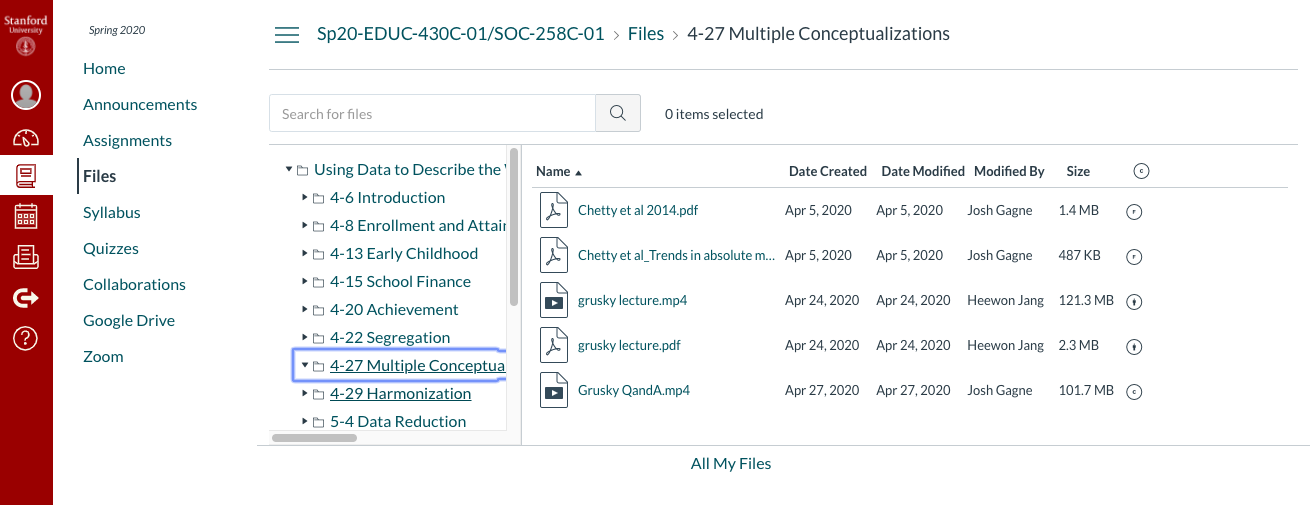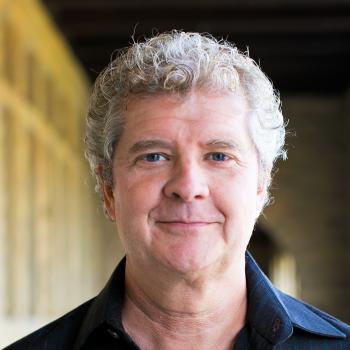Key points
- 25-30 minute asynchronous lectures allow students to learn content at their own pace and convenience; it also reduces in-person Zoom time
- Fostering conversation in a virtual setting is challenging, but having students prepare questions and providing continuity in small groups has helped immensely
- 1-on-1 office hour meetings and fun whole-class group activities (like Silly Hat Day or Furry Friends Day) help build classroom rapport
Building class community
Online instruction changes the way students and the instructional team interact with one another and build rapport. Informal conversations before and after class and between breaks are largely absent. Sean notes: “I think another thing we tried to do is figure out ways to get to know the students as we would in a real class where we would have the chance to chat with people. There would be a lot more informal interaction which doesn’t happen here.” In response, Sean and his teaching assistants, Heewon Jang and Josh Gagné, met personally with each student.
Sean Reardon: We made a requirement that everyone would sign up for office hours at least twice in the first seven weeks or so of class.
We did these goofy things which were sort of deliberately intended to be ice breakers/community building. So we had Silly Hat Day where everyone wore a silly hat and described to the class what their hat meant to them. We had Furry Friends Day where everyone brought their pets [or shared photos] and introduced their pets to the class. So a little bit of just trying to create space for people to be human with each other.

And in retrospect, I wish we’d done that a little earlier and a little more, maybe. But I think it took us a little while to figure out what was missing–that we weren’t really getting the kind of interpersonal human interaction, the necessary kind of lubricant for instruction to happen–for learning to happen.
Asynchronous lectures
A key component of EDUC 430C was the use of asynchronous lectures. Sean, Heewon, and Josh took turns recording 25-30 minute lectures using Zoom with accompanying slides and uploaded them to Canvas. Students could download and watch the lectures at their convenience before their synchronous Zoom class.
Heewon Jang: I think [asynchronous lecture] allows students to have some flexibility to use their own time. And also, it allows us to shorten class time so that they don’t have to sit for two hours. So instead of sitting on a chair for two hours, they can watch the lecture whenever they can and have just one hour of class time.
So instead of sitting on a chair for two hours, they can watch the lecture whenever they can and have just one hour of class time.
Josh Gagné: Yeah I’d add that the value of especially more technical things, to build a pause, go back a second…walking through equations and stuff like that has been very useful.

Josh Gagné: I’d say a downside of [asynchronous lectures] is it’s a lot more effort to produce a half-hour lecture recording than a half-hour lecture in-person…If I was doing in-class [lectures], I would have been a little nervous and probably over prepared to some extent but not nearly as much because you can read the room. You can write on the board. There’s a lot of things you can do with the physical space that you can’t [do in recordings].
Asking better questions
Sean shared that one of the biggest challenges has been fostering authentic discussions online. The team prioritized student feedback: by asking students what was working well or could be improved, they made changes that resulted in better discussions with guest lecturers and in break-out groups.
Sean Reardon: We spent a lot of time at the beginning thinking about how to get feedback from students and engaging students in making the class better, partly because they’ve all sat in many more online classes… we approached this quarter with a sense of humility and that no one was really prepared for this change.
We started asking that they come prepared with a discussion question, so when you watch the lecture you have something you want to ask. The quality of the questions has been quite good and students are sharing more sophisticated and nuanced questions than they might during off the cuff Q&A during a live lecture. We seem to go deeper with our guest speakers, which is a big part of the course.
Josh Gagné: I have been much more intentional about how we scaffold things and beginning the project earlier in the quarter compared to last year. We’ve made sure class time activities are more intentional, since it has been harder to have freeform discussions about the texts.
I have been much more intentional about how we scaffold things and beginning the project earlier in the quarter compared to last year.
We also moved to having more topic-based discussions. So break out groups are based on what topics students are working on and that structure is working better. Instead of smaller groups, we’ve created three consistent groups so one of us can always be there to give feedback and answer questions.
